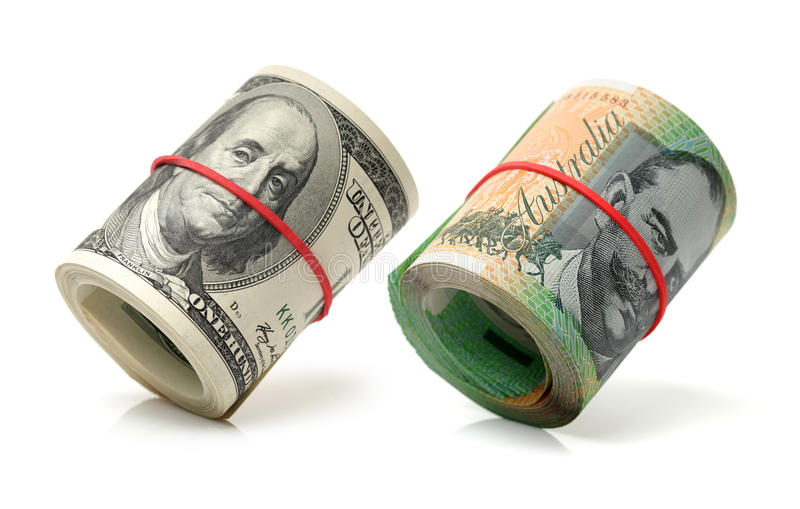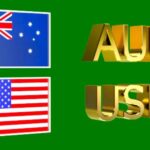Australian Dollar Gains Amid RBA Remarks but Faces Pressure from Trump Tariffs and FOMC Caution.
The Australian Dollar (AUD) has held onto its recent gains against the US Dollar (USD) despite growing market volatility and economic headwinds. This resilience follows the latest domestic employment data release and key remarks from Reserve Bank of Australia (RBA) Deputy Governor Andrew Hauser. However, risk sentiment remains fragile as financial markets react to renewed trade tensions stemming from US President Donald Trump’s tariff announcements, as well as a cautious tone in the Federal Open Market Committee (FOMC) Minutes.
Australia’s Labor Market Resilience Supports Australian Dollar Stability.
On Thursday, the Australian Bureau of Statistics (ABS) reported that the nation’s seasonally adjusted Unemployment Rate edged higher to 4.1% in January from 4.0% in December, aligning with market expectations. Despite this slight increase, the Employment Change data showed a net gain of 44,000 jobs, down from a revised 60,000 in December but still surpassing the consensus forecast of 20,000. The continued expansion in employment suggests that the labor market remains robust, even amid higher interest rates and slowing global economic momentum.
Addressing the employment report, RBA Deputy Governor Andrew Hauser reassured markets that the uptick in unemployment was not a cause for concern, highlighting the ongoing strength of Australia’s job market. Hauser emphasized that the central bank’s policy stance remains “restrictive,” signaling that further monetary easing is not guaranteed despite market expectations of three to four rate cuts in 2024. He also pointed out that Australia’s monthly Consumer Price Index (CPI) data remains incomplete and that policymakers will need to wait for quarterly inflation figures to gain a clearer picture of underlying trends.
RBA Rate Cut Fails to Dampen Australian Dollar, but Inflation Remains a Concern.
Earlier in the week, the RBA reduced its Official Cash Rate (OCR) by 25 basis points to 4.10%—its first rate cut in four years. While markets initially viewed the move as dovish, Governor Michele Bullock tempered expectations for additional cuts by emphasizing that inflation remains the central bank’s primary concern. She noted that while high interest rates have started to curb price pressures, it is still too soon to declare victory over inflation.
Despite the rate cut, the Australian Dollar managed to sustain its gains, benefiting from steady labor market conditions and a broader improvement in global risk sentiment. However, lingering uncertainty about future RBA policy decisions has kept investors cautious, especially as the US Federal Reserve maintains a more measured approach to monetary easing.
Trump’s Tariffs and FOMC Minutes Weigh on Australian Dollar.
While the AUD has shown resilience, it faces mounting pressure from external factors, particularly escalating trade tensions initiated by former US President Donald Trump. On Thursday, Trump confirmed that his administration plans to impose a 25% tariff on imports of automobiles, semiconductors, and pharmaceutical products. Additionally, he hinted at potential tariffs on lumber and forest products.
The announcement has heightened fears of a renewed global trade war, dampening risk appetite and prompting investors to flock to safe-haven assets like the US Dollar. This has placed downward pressure on AUDUSD, as Australia’s economy remains highly sensitive to trade disruptions, particularly given its strong economic ties with China.
Meanwhile, the latest FOMC Meeting Minutes reinforced the Federal Reserve’s cautious stance on monetary policy. Policymakers agreed to keep interest rates unchanged in January, emphasizing the need for additional data on economic activity, labor market trends, and inflation before considering any adjustments. The minutes highlighted that a clear, sustained decline in inflation would be necessary before the Fed contemplates rate cuts.
Comments from key Fed officials also reflected a mixed outlook. Federal Reserve Bank of Chicago President Austan Goolsbee acknowledged that inflation has declined but remains above target, suggesting that rates could be lowered once price pressures ease further. On the other hand, San Francisco Fed President Mary Daly and Philadelphia Fed President Patrick Harker expressed skepticism about rate cuts in 2025, citing persistent inflation concerns.
China’s Policy Decisions and Global Economic Uncertainty.
Adding another layer of complexity to the AUD’s outlook, the People’s Bank of China (PBOC) decided to keep its Loan Prime Rates (LPRs) unchanged, with the one-year rate at 3.10% and the five-year rate at 3.60%. While this decision was widely expected, it reflects the cautious approach China’s central bank is taking amid ongoing economic uncertainty.
China remains Australia’s largest trading partner, and any shifts in its monetary policy could have ripple effects on the Australian economy. A more accommodative stance from the PBOC could boost demand for Australian exports, particularly commodities like iron ore and coal. However, with China maintaining its current policy settings, the impact on the AUD has been relatively muted.
Market Outlook: Key Drivers for Australian Dollars.
Looking ahead, the Australian Dollar’s trajectory will depend on several critical factors:
1. RBA’s Future Policy Signals – While the recent rate cut was expected, markets remain divided on whether the RBA will continue easing policy. If inflation persists at elevated levels, the central bank may adopt a more hawkish stance, providing support for the AUD.
2. US Monetary Policy Developments – The Fed’s cautious tone suggests that rate cuts may not materialize as quickly as markets anticipate. If US economic data remains strong, the USD could strengthen further, exerting downward pressure on AUDUSD.
3. Global Trade Risks – Trump’s tariff announcements have reignited concerns over global trade tensions. Any further escalation, particularly with China, could negatively impact risk-sensitive currencies like the AUD.
4. China’s Economic Performance – A slowdown in Chinese economic growth or weaker-than-expected stimulus measures could weigh on Australian exports, limiting the upside for the AUD.
Conclusion
The Australian Dollar has managed to hold its ground despite mixed economic signals, supported by a resilient labor market and cautious optimism from the RBA. However, global risk factors—including Trump’s tariffs, Fed policy uncertainty, and China’s economic trajectory—continue to pose challenges.
While near-term volatility is likely, the AUD’s longer-term direction will depend on how these macroeconomic themes evolve. Traders and investors will closely monitor upcoming inflation data, RBA commentary, and geopolitical developments to gauge the currency’s outlook in the months ahead.









